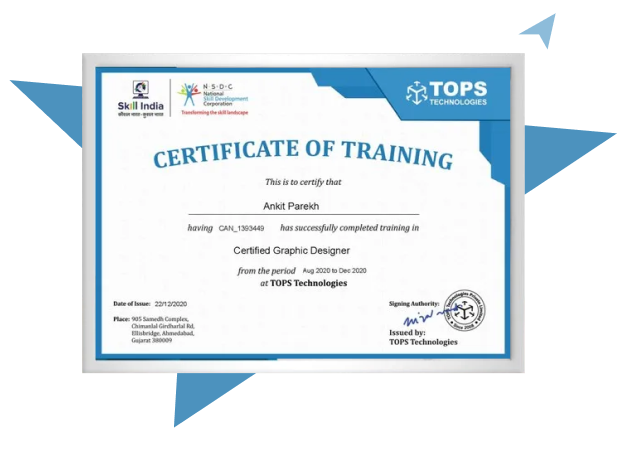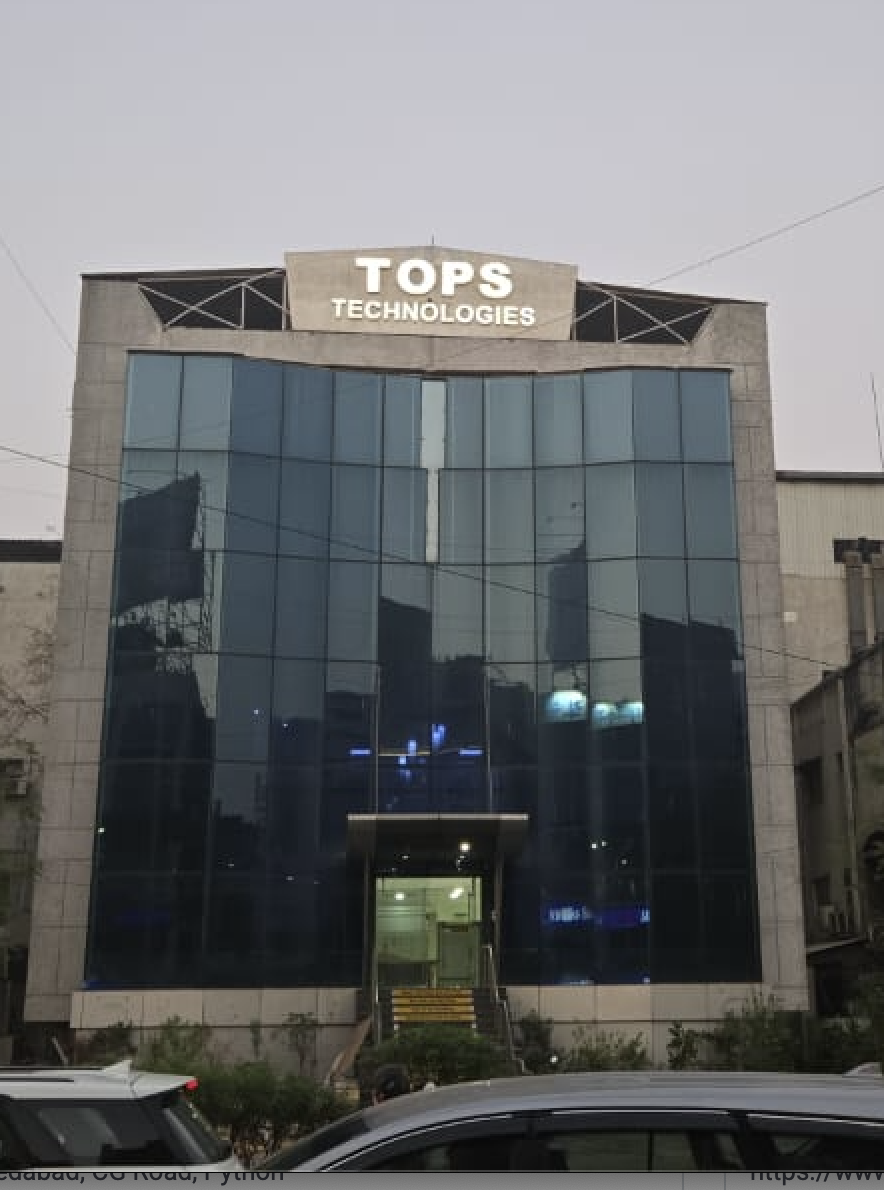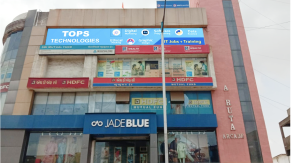Our Facts and Figures
1 Lac+
Student Placed
3000+
Companies TieUp
19+
Offices in India
50+
Industry Courses
Get 100% Job Assistance by enrolling in Certified Internet Of Things Training
Key Highlights
Limited Students Batch
Personalised Attention
Highly Qualified Teachers
Flexible Batch Timings
Interactive Learning
Live Projects
Career Support
Job Oriented Training
IOT Course Highlights
Enroll to Boost Your Career in IoT Programming Language
TOPS Technologies Provide Internet Of Things Training in Gandhinagar is highly renowned for playing a significant role in offering comprehensive training to students and working professionals alike. Gandhinagar is gradually emerging as the best IT hub in Western India. There are high demands for specialized skills in IoT to get a decent enough job in the IT industry.
Students at TOPS Technologies center in Gandhinagar are trained in IoT – from picking up the expertise in exchanging the data between the connected devices, smart devices, sensors, software, and other things. The enrolled students of the IoT training course undergo a rigorous theory and practical training sessions as the course progresses. TOPS Technologies stands as the pioneer in IT training with over 10,000 candidates placed in big IT companies since its inception.
It is ideal to visit the center and acquaint yourself with the Internet of Things training conducted by TOPS Technologies Gandhinagar Center and attend a risk-free demo session. For more information, email us at inquiry@tops-int.com.
40%
Average Salary Hike
4.5 Lacs
Highest Salary
3000+
Hiring Partners
Join Our Free Upcoming Webinar
Motion Graphics and Animation in Design
14 Dec 2025, 11:00 AM
Trainer
Saurabh Verma
(Sr. Technical Trainer)
Career in Data Science
14 Dec 2025, 12:30 PM
Trainer
Dhrumil Joshi
(Sr. Technical Trainer)
How to Protect your Website from Hackers
14 Dec 2025, 02:00 PM
Trainer
Faruk Pathan
(Sr. Technical Trainer)
How to Create Dynamic Websites in Python with Django
14 Dec 2025, 04:00 PM
Trainer
Sanket Chauhan
(Sr. Technical Trainer)
Building a Full Stack Application from Scratch
13 Dec 2025, 10:30 AM
Trainer
Rahul Sanghavi CG
(Sr. Technical Trainer)
How to Get a Job with Internship
13 Dec 2025, 12:30 PM
Trainer
Jigar Thakkar
(Sr. Technical Trainer)
UI / UX Design - Role of UI / UX Design in Websites' Success
13 Dec 2025, 02:00 PM
Trainer
Gaurav singh tomar
(Sr. Technical Trainer)
Career in Cloud Computing
13 Dec 2025, 04:00 PM
Trainer
Faruk Pathan
(Sr. Technical Trainer)
IOT Course Curriculum
Download Curriculum- Introduction of IoT
- The Internet ofThings
- Introduction to Cloud Computation
- IOT Application of different domain
- Arduino Device
- Arduino IDE
- Connectivity With Serial Port
- Serial Output
- Device Connection With Arduino
- Device Controlling using Arduino Programming
- Variables
- Basic operation(add, subtract,multiply)
- Basic Variable type (string,integers)
- Concatenating String
- Booleans (True/False)
- Lists
- Lists Methods (Append, Extend)
- Adding Lists Together With +
- Sets
- FOR Loops
- Indexing
- Splitting Strings
- Tuples
- Dictionaries
- Working With Sensors
- PIR Motion sensor
- how to use Ultrasonic Sensor
- Work With DHT11 Sensor
- How to use Bluetooth Module(HC-05)
- Connect ESP8266 With Arduino For Wi-Fi Connectivity
- Connect Soil Moisture sensor With Arduino
- How Web Service Working
- Creating web service
- Fetching data in Arduino using web service
- Controlling device using web services
- MQTT
- DDS
- AMQP
- LoRa-WAN
- CoAP
- GSM
- Wi-Fi
- Establish Remote Desktop Connection
Our TOPS Training Centers in India
Course Key Features
Skills Covered
Get Training Certificate by Government
Recognized NSDC/Skill India

- National Skill Development Corporation
- Supported by the vision of PM Shri Narendra Modi
- Certification by NSDC SkillIndia
- Valid for all Jobs and College Training
- International Recognition

FAQ
Remote device management involves monitoring, updating, configuring, and troubleshooting IoT devices from a central dashboard. It ensures that devices function properly without needing physical access.
An IoT ecosystem is a network of interconnected devices, platforms, users, and applications that work together to gather, exchange, and act upon data. It includes hardware, software, connectivity, and cloud infrastructure.
Yes, the IoT course emphasizes hands-on practicals and mini-projects, where you’ll work with sensors, microcontrollers, and cloud platforms to build real-world IoT solutions.
Blockchain enhances IoT security by providing a decentralized and tamper-proof ledger of device interactions. It’s used for secure data exchange, device authentication, and transaction tracking in IoT ecosystems.
IoT devices are deployed to monitor air quality, water levels, soil composition, noise pollution, and radiation. Real-time environmental data helps governments, researchers, and industries take timely and effective action.
IoT optimizes energy usage by monitoring consumption patterns, detecting leaks or inefficiencies, and automating lighting and HVAC systems. Smart grids and connected meters are also examples of IoT in energy management.
Data analytics turns raw sensor data into actionable insights. It helps businesses optimize processes, predict trends, reduce waste, and improve decision-making. Without analytics, IoT data would have limited value.
Some IoT systems can operate on local networks or with edge computing, processing data without internet access. However, most IoT solutions rely on internet connectivity to send data to cloud servers for remote monitoring and control.
Cloud platforms provide scalable storage, data analytics, and application hosting for IoT systems. They enable centralized management of devices, real-time dashboards, machine learning models, and data-driven services.
Smart wearables are IoT-enabled gadgets worn on the body, such as fitness trackers, smartwatches, and health monitors. They collect physiological and environmental data, providing real-time feedback to users and healthcare providers.
Interview Questions
Smart cities use IoT to optimize urban infrastructure and services. Applications include smart traffic lights, energy-efficient lighting, air quality sensors, waste management, and public safety systems—all connected for better governance.
Many IoT devices rely on batteries, so power efficiency is crucial. Strategies include:
- Sleep modes: Reducing activity during idle times.
- Low-power protocols: Like Zigbee or LoRa.
- Efficient coding and data transmission: Minimizing energy usage.
Low Power Wide Area Network (LPWAN) is a type of wireless network designed for long-range communication with low power usage. Technologies like LoRa and NB-IoT are ideal for IoT use cases such as agriculture and logistics.
- IoT (Internet of Things): Refers to consumer-level connected devices (e.g., smartwatches, smart homes).
- IIoT (Industrial Internet of Things): Focuses on industrial applications like manufacturing, energy, and logistics, where precision, uptime, and scale are critical.
A digital twin is a virtual representation of a physical device or system. It uses real-time IoT data to simulate performance, monitor health, and predict future behavior. It's widely used in industrial and manufacturing sectors.
Actuators are components that take actions based on the processed data from sensors. For example, turning on a fan when the temperature exceeds a threshold. They convert electrical signals into physical actions.
Latency is the time delay between data generation and action or response. In IoT, low latency is crucial for real-time applications like autonomous vehicles or medical devices, where delayed responses can be critical.
IoT security measures include:
- Encryption: Secures data during transmission.
- Authentication: Ensures only authorized devices communicate.
- Firmware Updates: Patches vulnerabilities regularly.
- Firewalls and VPNs: Protect networks from attacks.
Interoperability refers to the ability of different IoT devices and systems to work together seamlessly. It's challenging due to varied protocols, manufacturers, and standards. Open standards and APIs help improve compatibility.
IoT generates massive amounts of data. Data analytics helps extract valuable insights, predict trends, detect anomalies, and optimize performance. It transforms raw data into actionable intelligence.










